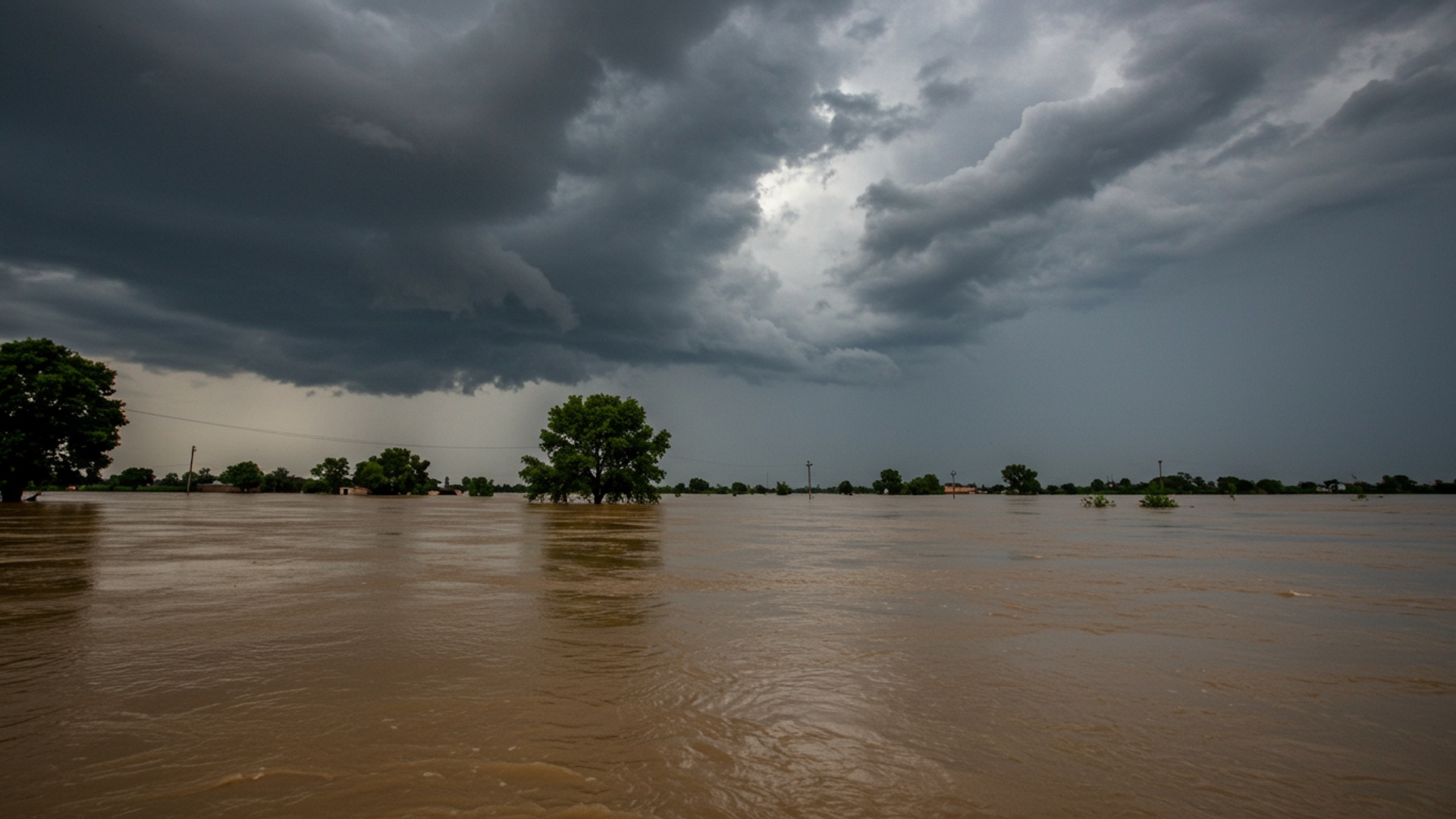Punjab is on high alert as heavy monsoon rains continue to fall across the region, bringing a serious threat of widespread flooding. Local people are worried as water levels in rivers and canals rise quickly, making many areas unsafe. Authorities are watching the situation closely, telling everyone to be ready for fast-moving water and possible damage to homes and land. The constant downpour means more water is flowing into the low-lying areas, putting many towns and villages at great risk right now.
Current Situation and Warnings
Authorities in Punjab have issued a high alert as the province prepares for intense monsoon rainfall that threatens widespread flooding in many areas. The Provincial Disaster Management Authority (PDMA) has sounded the alarm, forecasting heavy rains and the possibility of sudden, heavy downpours, especially in upper parts of the province. This latest monsoon period, described as the seventh and stronger than earlier ones, is expected to continue through much of the coming week.
The India Meteorological Department (IMD) has also predicted heavy rainfall for Punjab, along with other northern states, over the next few days. District administrations across Punjab have been directed to stay highly watchful and ready for any emergency.
PDMA Director General Irfan Ali Kathia stated that Punjab is expected to have heavy rains over the next three days, with a notable risk of cloudbursts in Upper Punjab and flash floods in the rivers of Dera Ghazi Khan within the next 72 hours.
Areas that might see heavy rain include Murree, Galiyat, Attock, Chakwal, Jhelum, Mandi Bahauddin, Gujrat, Gujranwala, Hafizabad, Lahore, Sheikhupura, Sialkot, Narowal, Kasur, Faisalabad, Sahiwal, Okara, Khushab, Sargodha, Bhakkar. Mianwali. There is also a warning for urban flooding in low-lying parts of cities like Rawalpindi, Gujranwala, Lahore. Sialkot.
River Levels and Dam Status
Monitoring of major rivers and dams is ongoing as water levels rise due to continuous rainfall. The Indus River is currently experiencing low-level flooding at Tarbela and Taunsa, with a medium level of flooding noted at Kalabagh and Chashma. The Sutlej River at Ganda Singh Wala is also at a low flood level. But, the Chenab, Jhelum. Ravi rivers currently show normal water flow.
Dam water levels are being closely watched. Tarbela Dam is reported to be near full capacity, at 98 percent, while Mangla Dam is at 68 percent. Indian dams connected to the river system have reached 70 percent of their capacity. Officials assure that major dams like Bhakra, Pong. Ranjit Sagar maintain water levels within safe limits.
Government Preparations and Actions
The Punjab government has stated that it is fully prepared to handle any flood situation. This comes after a proactive approach was adopted following severe floods in 2023. A budget of about Rs 300 crore has been set aside for flood preparedness measures this year.
A meeting was held involving Deputy Commissioners, chaired by the PDMA Director General, to review readiness and coordinate response efforts across the province. vital steps taken include:
- District-level control rooms are working non-stop and are open for emergency help.
- Emergency response teams are on high alert and are continuously watching rivers and drainage systems in areas at risk of flooding.
- Advanced systems for predicting floods and giving early warnings have been put in place to ensure quick and organized responses.
- Rescue teams are being placed at key locations to ensure fast action during emergencies.
- The Water Resources Department has done a lot of work to reduce flood risks. This includes cleaning out silt and debris from 4,766 kilometers of drains and water channels. They have also made riverbanks stronger.
- A large number of sandbags, about 8. 76 lakh, have been bought for flood control. Of these, 3. 24 lakh sandbags have already been filled and placed in essential spots. A system using maps (GIS mapping) is in place to quickly send these sandbags where they are needed during emergencies.
- An integrated flood management plan involves working together with the Water Resources Department, Revenue Department, Police. other disaster management agencies.
- Nineteen earth mover machines have been bought by the department and are working day and night to clear drains and strengthen weak points.
Punjab Water Resources Minister Barinder Kumar Goyal emphasized that the state government has put in place strong measures to prevent floods and detailed plans for being ready. Flood defense structures and emergency response methods have been fully prepared across Punjab.
Public Advisories and Safety
Citizens are being strongly advised to take all necessary safety steps during the rainy season. They are asked to stay informed about weather updates and to cooperate fully with local district administrations and rescue agencies. Public announcements are being made, including through local places of worship, to encourage residents to move to safe locations if heavy rainfall occurs.
crucial advice for the public includes:
- Avoid letting children play near rivers, streams. low-lying areas.
- Stay away from waterlogged areas.
- Follow any orders to leave an area quickly if issued by authorities.
- Contact the nearest control room immediately in case of an emergency.
Hospitals have been told to have enough staff ready to handle emergencies and to ensure that drainage systems around their buildings are working well to prevent water buildup.
Monsoon Impact Data (This Season)
While no loss of life or property was reported in Punjab in the last 24 hours as of the latest updates, the monsoon season has already had an impact across the province. Data released by the PDMA on the overall impact since the beginning of the monsoon season shows the following figures:
| Category | Count |
|---|---|
| Lives Lost | 164 |
| Injured Persons | 582 |
| Houses Damaged | 216 |
| Livestock Lost | 121 |
Financial help is being given to affected families as per instructions from the Chief Minister.
The government is focusing on factual reporting and transparent data sharing to ensure the public is well-aware of the situation and can take necessary precautions. There is a clear emphasis on minimizing risk to life and property through quick planning and action. The current high alert underlines the need for continued vigilance as the monsoon rains are expected to intensify in the coming days.
The severity of monsoon seasons has been increasing, with climate changes making rainfall patterns more unpredictable and heavy. Scientists point out that warmer air can hold more moisture, which increases the chance of extreme downpours. This, combined with melting glaciers and poor drainage systems, makes regions more vulnerable to floods.
The lessons from past floods, especially the significant damage in 2022 and 2023 across various parts of the country, have driven the current heightened state of readiness. The administration is working to ensure that all necessary measures are in place to safeguard the population and reduce the impact of potential flooding.
![]()














